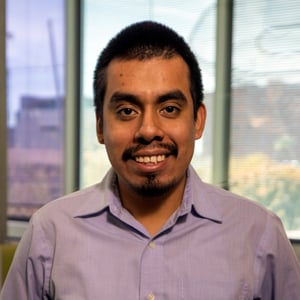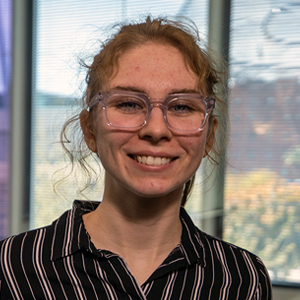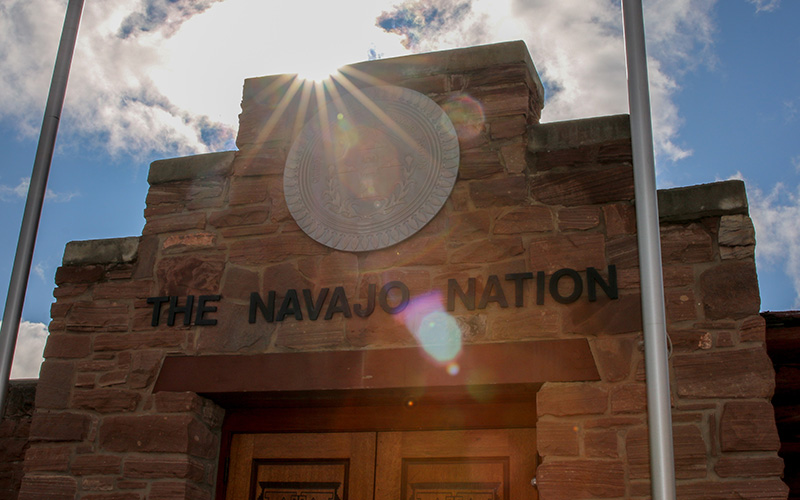PHOENIX – Native Americans are seeking more help from the federal government to fight COVID-19, even as the Navajo Nation and other tribes take steps to combat the disease themselves – including raising money to help vulnerable citizens and issuing shelter-in-place orders.
The Indian Health Service reported 83 cases of novel coronavirus, the respiratory virus that causes COVID-19, across its nationwide service area as of March 25, based on reporting from IHS and tribal or urban Indian health facilities. However, reporting from tribal and urban programs is voluntary, the service noted.
As of March 25, the Navajo Nation had reported 69 COVID-19 cases among Navajos – 43 in Navajo County, eight in Apache County and six in Coconino County in Arizona; and four in McKinley County, seven in San Juan County and one in Cibola County in New Mexico.
“We have to isolate ourselves to isolate the virus,” Navajo Nation President Jonathan Nez, who last week issued a stay-at-home order for tribal members, said in a statement. “Let’s do it for our elders, our children, and our high-risk individuals. We will fight and eventually beat this virus together, but we need everyone to take it seriously.”
This graph shows the increase in COVID-19 cases since the first case was reported on March 17th. If we don’t comply with the advice of health care and pandemic experts to stay home, we will continue to see greater and greater increases in confirmed cases on the Navajo Nation. pic.twitter.com/GMineqjWPd
— Jonathan Nez (@NezForAZ) March 26, 2020
On March 6, President Donald Trump signed a measure providing $8.3 billion to federal agencies to respond to the coronavirus pandemic. That includes about $40 million in direct funding – to be distributed by the Centers for Disease Control and Prevention – to tribes, health organizations and providers that work with tribes.
A second federal aid package provides an additional $64 million to the Indian Health Service to cover the cost of testing for Native Americans.
However, those funds have not yet been made widely available, according to Jared Touchin, spokesman for the Navajo Nation, one of the country’s largest, with more than 300,000 enrolled members.
“The Navajo Nation itself has appropriated $4 million of our own money … because their resources aren’t coming quick enough from the federal government,” Touchin said in a phone interview this week. “So we’re stepping in to try to expedite that process.”
With higher rates of chronic illness and an aging population, Indian Country faces unique challenges amid COVID-19 – or “Dikos Nstaaígíí-19” in Navajo.
The CDC warns that older adults and people with health conditions, including diabetes, are at higher risk of being severely impacted by COVID-19. Native Americans have the highest rates of Type 2 diabetes in the nation and, according to the most recent U.S. census data, about 16% of Native Americans are older than 65.
Other challenges are cramped housing, a lack of reliable internet access to obtain accurate information about the virus and even having clean water for proper hand-washing.
A 2019 report from the US Water Alliance estimates 30% of people living on the Navajo reservation lack access to running water and instead must collect and transport water to homes, a trip that can be up to 40 miles long.
And research from the American Indian Policy Institute at Arizona State University shows that Native American tribes have limited internet access due to the cost and lack of infrastructure. This can make access to the rapidly changing information on COVID-19 and its spread difficult.
Although Native communities are working to meet their needs, government and tribal officials said the release of federal funds is crucial to the well-being of tribes.
In a letter to Michael Weahkee, principal deputy director of the Indian Health Service, U.S. Rep. Raul Grijalva, D-Tucson, expressed concern about the Trump administration’s efforts to address the needs of Native Americans.
“Our entire population – regardless of income or location – needs a sufficient federal response to this crisis,” Grijalva said. “Ignoring longstanding policy failures in Indian Country is not an option, and the longer the Trump administration continues to hold federal funding hostage, the higher the cost will be in human lives.”
Added Rep. Tom O’Halleran, D-Sedona: “The Navajo Nation is facing an extreme lack of supplies and resources to fight the spread of the coronavirus as compared with non-tribal communities. … I am calling on both Governor Doug Ducey and Vice President Pence to immediately make available any and all state and federal resources at their disposal to help slow the spread of COVID-19 on the Navajo Nation.”
The Indian Health Service has been holding weekly calls with tribal leaders nationwide to answer questions and address concerns. And the U.S. Department of Health and Human Services, which oversees both the IHS and the CDC, has said it’s working to get resources quickly to nine regionally designated tribal organizations.
“Our nation’s tribal health leaders are on the front lines of the COVID-19 outbreak, and these additional resources will help increase public health capacity for Indian Country,” CDC Director Robert Redfield said in a statement.
There are 574 federally recognized Indian nations in the United States, spread across 36 states. The Navajo reservation is the nation’s largest by land mass, stretching more than 27,000 square miles across Arizona, Utah and New Mexico.
The Navajo Nation closed itself to visitors March 18, one week after declaring a state of emergency and shuttering all tourism-related businesses and locations. Nez said officials would not erect roadblocks because they do not have those resources but no services would be open for visitors.
Two days later, on March 20, Nez issued a shelter-in-place order for everyone living on the reservation. At that point, there were about 14 cases of COVID-19 among Navajos.
Nez has instructed fast-food restaurants to limit services to drive-thru only, and all restaurants to limit staffing to “essential employees.”
Touchin said volunteers are gathering such essentials as food and cleaning supplies, and first responders are delivering those items to residents on lockdown – working to avoid person-to-person contact.
Navajo Nation Attorney General Ethel Branch has started a GoFundMe campaign to assist both the Navajo and Hopi tribes, especially elders raising grandchildren, single parents and those with compromised immune systems or struggling financially. Hopi leaders also have issued a stay-at-home order and closed facilities to tourists.
The GoFundMe page notes the two reservations are extreme food deserts. A report from the U.S. Department of Energy states that the Navajo reservation has 13 grocery stores for its 150,000 people, and residents on average must drive three hours to reach one.
The Tuba City Unified School District, which serves both tribes, is offering a drive-thru and pickup meal service at four schools: Tuba City Elementary, Tuba City High, Cameron Elementary and Gap Elementary. Children 18 or younger can receive free breakfast and lunch from 7:30 a.m. to 11 a.m.
The Arizona-based grocery store chain Bashas’ is opening stores on the reservation one hour early on Wednesdays, from 6 a.m.-7 a.m., exclusively for people 65 and older.
In a video recorded in both Navajo and English from Bashas’ Diné Market in Window Rock, Nez said the store’s staff has been cleaning thoroughly. He encouraged residents to “buy sparingly” to avoid shortages.
In another COVID-19 update on March 22, Nez encouraged tribal members to abide by all orders to help curb the disease – among the Navajo people and across the U.S.
“I ask everyone respectfully to please listen to authorities,” he said in a video posted on YouTube. “Please listen to your officers out there, listen to the health care professionals, and listen to your leaders in your community. I know that there are people that want to get to work, also to get the necessities. Just send one person from your family to go get necessities. And those that are out there, stay safe. …
“We just need to be safe everywhere we are.”


